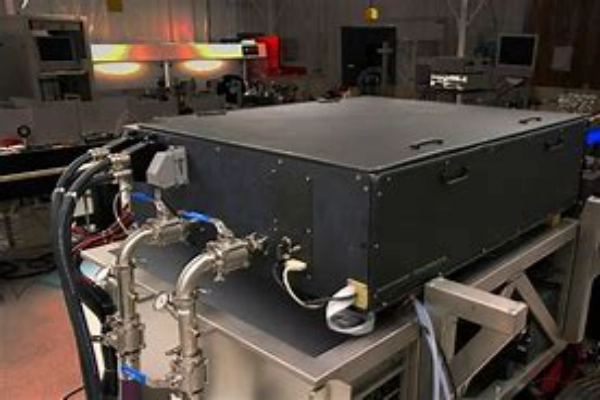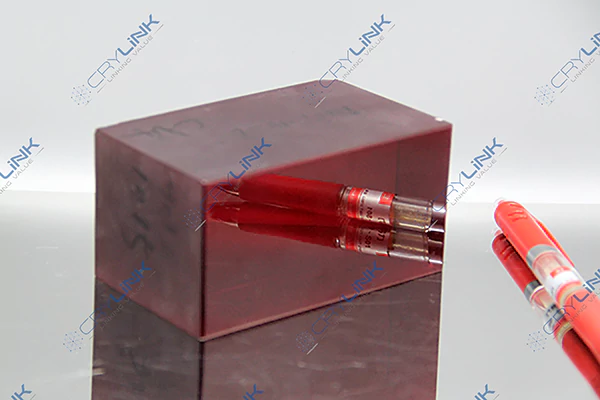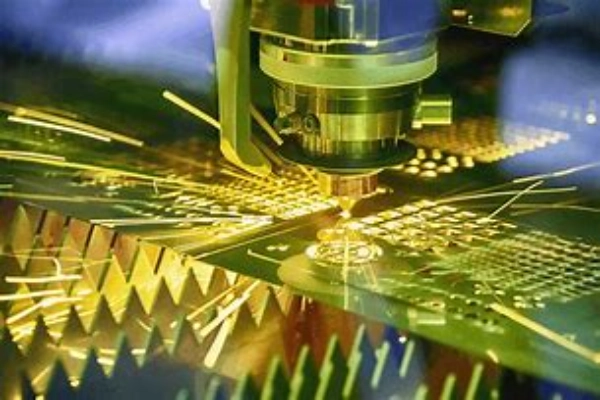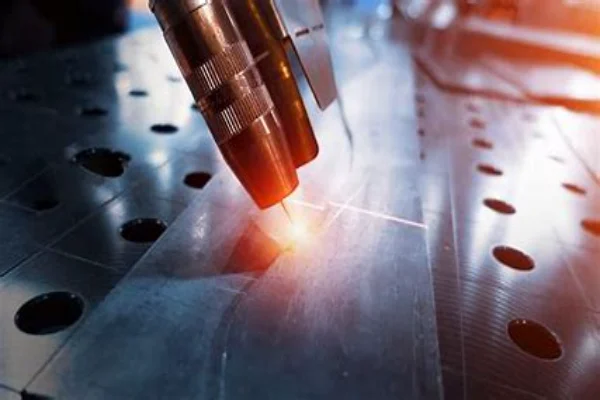High-power solid-state lasers have revolutionized numerous industries, from manufacturing to medicine. As technology continues to advance, the importance and versatility of these lasers become even more apparent. In this comprehensive guide, we delve deep into the basics of high-power solid-state lasers, their working principles, and their significance in various application domains.

Introduction to Solid-State Lasers
Solid-state lasers have emerged as a cornerstone in the realm of laser technology, distinguishing themselves from their gas and liquid counterparts through their unique gain medium. This gain medium, predominantly a crystalline structure, serves as the amplifying agent for light, harnessing the phenomenon of stimulated emission to produce coherent light beams.
Diving deeper into the mechanics of solid-state lasers, the working principle is both fascinating and intricate. The process begins with an external energy source, commonly referred to as a pump. This pump is responsible for exciting the atoms or ions embedded within the crystal. As these atoms or ions absorb energy, they transition to a higher energy state, often termed an ‘excited state’.
However, this excited state is not stable, and soon, these atoms or ions seek to return to their original, or ‘ground’, state. In doing so, they release energy in the form of photons. What’s remarkable is that these emitted photons possess the capability to stimulate the emission of additional photons from other excited atoms or ions. This chain reaction results in the amplification of light, producing a beam that is both intense and coherent.
The architecture of a solid-state laser is meticulously designed to optimize this amplification process. At its core lies the gain medium, which is often a crystal infused with specific elements to enhance its lasing properties. A popular choice is the neodymium-doped yttrium aluminum garnet, abbreviated as Nd:YAG. This crystal is revered for its efficiency and versatility in producing laser light across various applications.
Complementing the gain medium is the pump source, a critical component that supplies the necessary energy to excite the atoms or ions in the crystal. The choice of pump source can vary, but its primary function remains consistent: to elevate the energy levels of the atoms or ions to facilitate the emission of photons.
Lastly, the optical cavity plays a pivotal role in refining the laser beam’s properties. Comprising two strategically placed mirrors, the optical cavity ensures that the photons traverse multiple times through the gain medium. As these photons reflect back and forth, they stimulate further emissions, leading to a cascading amplification effect. One of these mirrors is partially transparent, allowing the amplified light to exit as a concentrated laser beam.
In essence, solid-state lasers epitomize the synergy of physics and engineering. Through a harmonious interplay of components and principles, they produce laser beams that are not only powerful but also precise, catering to a myriad of applications in today’s technological landscape.

Importance in Various Application Domains
The significance of high-power solid-state lasers transcends various sectors, marking them as a technological marvel that has reshaped the way industries operate. Their unparalleled efficiency, precision, and versatility have made them a sought-after tool in diverse application domains.
In the realm of manufacturing, the introduction of solid-state lasers has been nothing short of revolutionary. Traditional methods of cutting, welding, and engraving often lacked the finesse and speed required for intricate designs and high production rates. However, with the advent of these lasers, manufacturers can now achieve cuts with razor-sharp precision, weld with minimal heat exposure, and engrave with intricate detailing. This not only enhances the quality of the final product but also significantly reduces production time, leading to increased throughput and profitability.
The medical sector, known for its relentless pursuit of precision, has also embraced solid-state lasers, especially in surgical procedures. Surgeries demand utmost accuracy to ensure patient safety and optimal outcomes. Solid-state lasers, with their ability to focus on minuscule areas, have made surgeries less invasive. This means reduced tissue damage, quicker recovery times, and fewer post-operative complications. Whether it’s the removal of tumors or corrective eye surgeries, these lasers have proven to be an invaluable asset to the medical community.
Shifting the lens to research and development, solid-state lasers have opened new frontiers in scientific exploration. In spectroscopy, they allow researchers to study the interaction between matter and electromagnetic radiation, providing insights into the properties of various materials. Furthermore, in the field of particle acceleration, these lasers have paved the way for groundbreaking experiments, enabling scientists to delve deeper into the mysteries of the universe.
Defense and security, sectors that prioritize accuracy and reliability, have also harnessed the power of solid-state lasers. Modern defense systems employ these lasers for missile interception, ensuring that threats are neutralized before they can cause harm. Additionally, in the realm of target designation, solid-state lasers provide pinpoint accuracy, ensuring that munitions hit their intended targets with minimal collateral damage. Infrared countermeasures, which protect aircraft from heat-seeking missiles, also rely on these lasers to divert threats, safeguarding both crew and equipment.
In today’s digital age, communication is paramount. As data consumption grows exponentially, there’s a pressing need for efficient and reliable communication systems. Solid-state lasers have risen to this challenge, playing a crucial role in free-space optical communication. Unlike traditional communication methods that rely on cables, this technology uses laser beams to transmit data across vast distances. This not only ensures faster data transfer rates but also reduces the infrastructure costs associated with laying cables.
In conclusion, high-power solid-state lasers have etched their mark across various industries, proving their worth time and again. Their unmatched efficiency, adaptability, and precision have not only optimized existing processes but have also paved the way for innovations that were once deemed impossible. As technology continues to evolve, the applications and potential of solid-state lasers are bound to expand, further solidifying their status as a technological marvel

Crystals Used in Solid-State Lasers
The heart of a solid-state laser lies in its crystal, which serves as the gain medium. This crystal is pivotal in determining the laser’s overall performance, including its efficiency, power, and emitted wavelength. Given the diverse requirements across various applications, the choice of crystal becomes paramount.
Neodymium-doped Yttrium Aluminum Garnet, or Nd:YAG, is one of the most widely used crystals in solid-state lasers. Its popularity stems from its exceptional thermal and mechanical properties. The neodymium ions in the crystal provide a broad range of emission wavelengths, making it versatile for various applications, from industrial cutting to medical procedures.
Titanium-doped Sapphire, known as Ti:Sapphire, is another prized crystal in the laser community. Its most notable feature is its broad tunable range, allowing users to adjust the laser’s output wavelength as per their requirements. This adaptability makes Ti:Sapphire lasers ideal for research applications, especially in fields like spectroscopy where varying wavelengths are often needed.
Ruby, composed of aluminum oxide with chromium impurities, was one of the first crystals to be used in laser technology. The chromium ions give the ruby its characteristic red color and are responsible for its lasing properties. Ruby lasers emit a sharp pulse of red light, making them suitable for applications that require short bursts of energy, such as tattoo removal or certain medical treatments.
In essence, the choice of crystal is not merely about its lasing properties but also about its compatibility with the intended application. Whether it’s the versatility of Nd:YAG, the tunability of Ti:Sapphire, or the pulsed output of Ruby, each crystal brings its unique strengths to the table, enabling solid-state lasers to cater to a myriad of requirements across industries and research.

Advantages of High-Power Solid-State Lasers
High-power solid-state lasers have carved a niche for themselves in the technological landscape, primarily due to the myriad of advantages they offer. One of the most lauded benefits is their unparalleled precision. These lasers can be focused on incredibly minute areas, making them ideal for tasks that demand exactness, such as microfabrication or delicate surgical procedures. This precision ensures that the task at hand is executed with utmost accuracy, minimizing errors and enhancing the overall quality of the outcome.
Another standout feature of high-power solid-state lasers is their efficiency. The conversion rate of pump energy to laser light is exceptionally high, ensuring that most of the energy supplied to the laser is utilized in producing the laser beam. This not only makes the laser operation more energy-efficient but also ensures a consistent and powerful output, which is crucial in applications like industrial cutting or welding where a steady and potent laser beam is imperative.
Versatility is yet another feather in the cap of high-power solid-state lasers. Their applicability spans a wide array of fields, from medicine and manufacturing to research and defense. Moreover, certain solid-state lasers offer adjustable wavelengths, allowing users to tune the laser output to their specific requirements. This adaptability ensures that a single laser system can cater to multiple applications, making it a cost-effective and flexible solution for various industries.
In a nutshell, the precision, efficiency, and versatility of high-power solid-state lasers make them an invaluable tool in today’s fast-paced technological era, promising a future where these lasers play an even more significant role in shaping industries and research.

Future Prospects
With continuous research, the potential applications and efficiencies of high-power solid-state lasers are bound to expand, making them even more integral to modern technology.
Conclusion
High-power solid-state lasers, with their efficiency and versatility, have become indispensable in various domains. As technology advances, their potential only grows, promising a future where these lasers play an even more significant role in shaping industries and research.
FAQs
- What is the primary difference between solid-state lasers and other lasers?
- Solid-state lasers use a solid gain medium, typically a crystal, whereas other lasers might use gas or liquid.
- Why are Nd:YAG crystals commonly used in solid-state lasers?
- Nd:YAG crystals offer high efficiency and a suitable wavelength for many applications.
- How do solid-state lasers achieve such precision?
- Their ability to focus on very tiny areas allows for high precision.
- Are solid-state lasers safe for medical procedures?
- Yes, when operated correctly, they offer precision that minimizes tissue damage.
- Can the wavelength of a solid-state laser be adjusted?
- Yes, certain solid-state lasers, like Ti:Sapphire, offer adjustable wavelengths.







